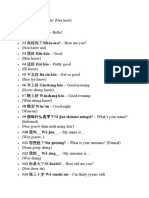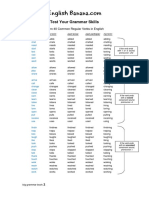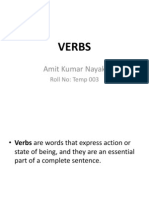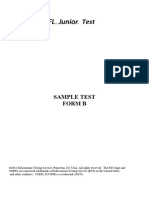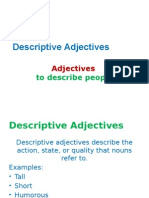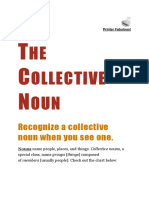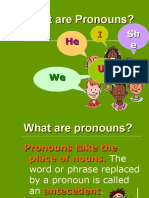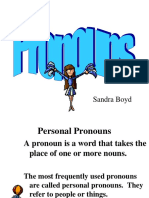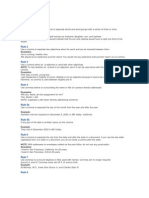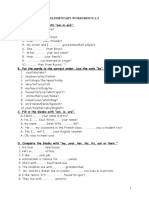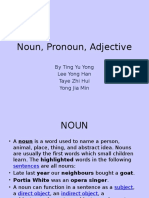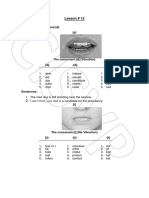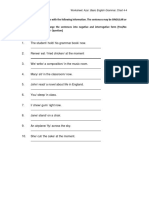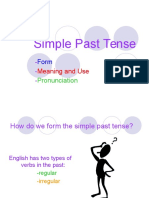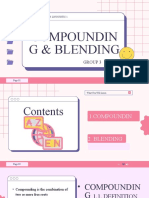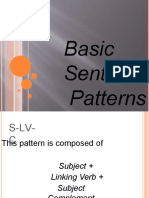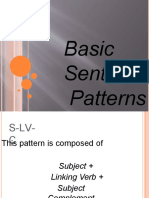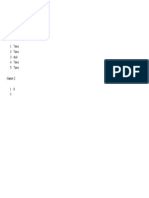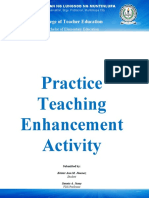100% found this document useful (1 vote)
76 views15 pagesBasic Sentence Patterns
This document outlines and defines four basic sentence patterns in English: S-LV-C, S-TV-DO, S-IV/S-IV-ADV, and S-TV-IO-DO. It explains that S-LV-C uses a subject, linking verb, and subject complement, S-TV-DO uses a subject, transitive verb, and direct object, S-IV/S-IV-ADV uses an intransitive subject and verb with or without an adverb, and S-TV-IO-DO uses a subject, transitive verb, indirect object, and direct object. Examples are provided for each pattern.
Uploaded by
KRISTER ANN JIMENEZCopyright
© © All Rights Reserved
We take content rights seriously. If you suspect this is your content, claim it here.
Available Formats
Download as PPTX, PDF, TXT or read online on Scribd
100% found this document useful (1 vote)
76 views15 pagesBasic Sentence Patterns
This document outlines and defines four basic sentence patterns in English: S-LV-C, S-TV-DO, S-IV/S-IV-ADV, and S-TV-IO-DO. It explains that S-LV-C uses a subject, linking verb, and subject complement, S-TV-DO uses a subject, transitive verb, and direct object, S-IV/S-IV-ADV uses an intransitive subject and verb with or without an adverb, and S-TV-IO-DO uses a subject, transitive verb, indirect object, and direct object. Examples are provided for each pattern.
Uploaded by
KRISTER ANN JIMENEZCopyright
© © All Rights Reserved
We take content rights seriously. If you suspect this is your content, claim it here.
Available Formats
Download as PPTX, PDF, TXT or read online on Scribd
/ 15
